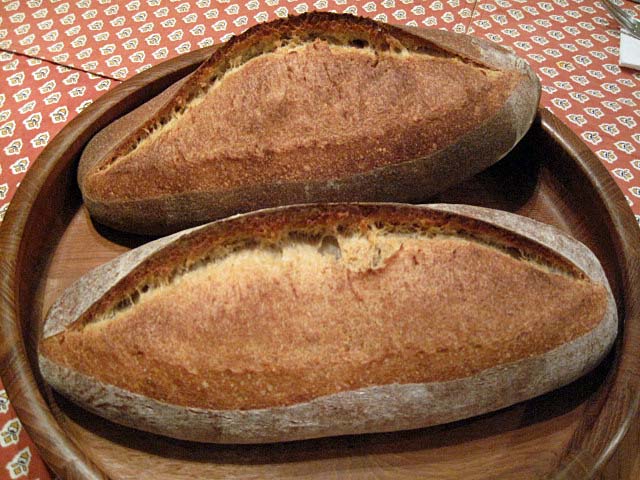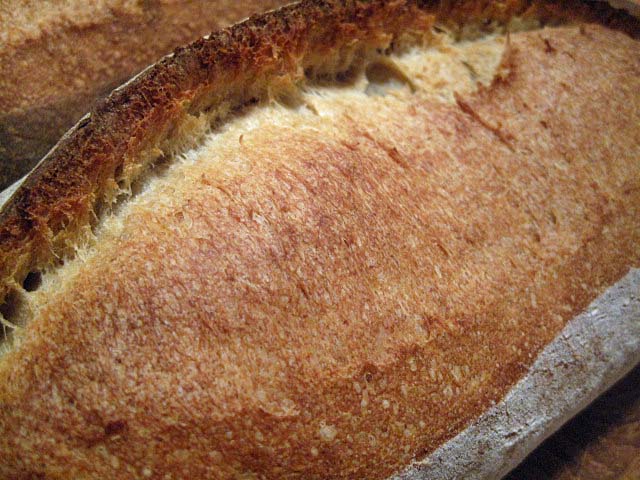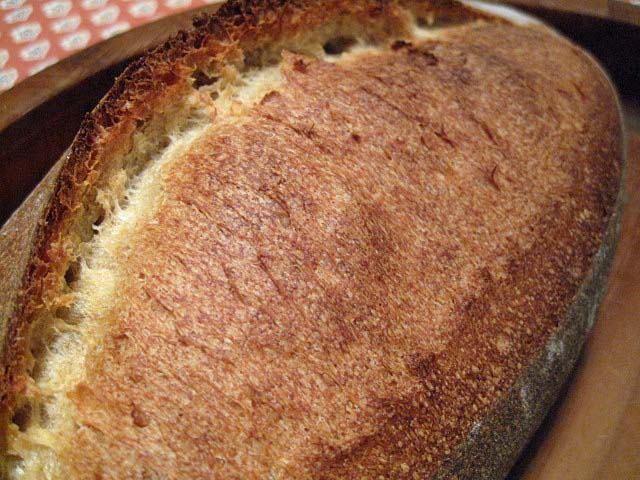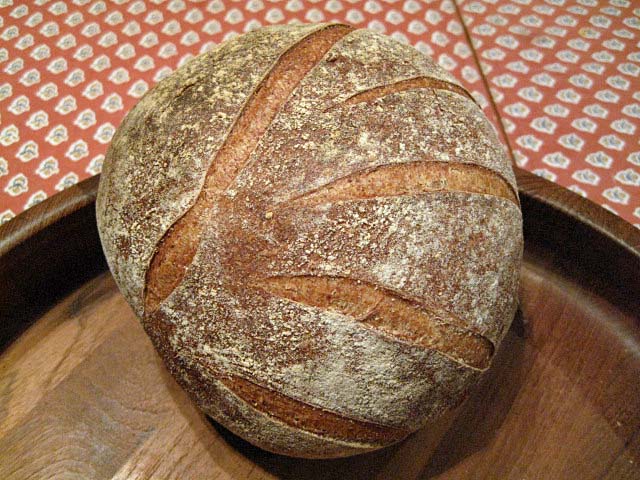This is my second attempt at this recipe, my first attempt is HERE. I'am very content, as this is the best Pain Au levain i've baked so far. I've made changes to the Recipe and procedures as compared to the earlier attempt. The changes were:
1 - I increased the % of prefermented flour from 15% to around 20% (THANK YOU ANDY!)
2 - I was meticulous about the last 3 refreshments of the starter prior to building my levain (THANK YOU LARRY!)
3 - I used an all white starter, instead of the Mixed flour starter i used earlier.
4 - I stretched and folded (letter-wise) on a bench instead of in the bowl, twice.
5 - I milled the sea salt to a fine powder.
6 - I did not include a freshly milled WW flour, instead, i used a strong WW flour.
7 - I made sure the final dough temperature was 76F or 25C, by means of immersing my hands to mix the dough, which gave warmth to the dough.
8 - I patted down the dough to redistribute the fermentation bubbles after initial fermentation.
9 - I steamed the oven for 10 minutes, as the bread started taking color quickly.
10 - The doughs fermented exactly as per the book instructions, i.e. 5 hours Total fermentation.
11 - I divided the dough into two 1.5 lb pieces.
And this is how the breads turned out!




The flavor was Superb, with subltle acidity, and wheaty aroma from the wholewheat. This is a keeper.
khalid

















